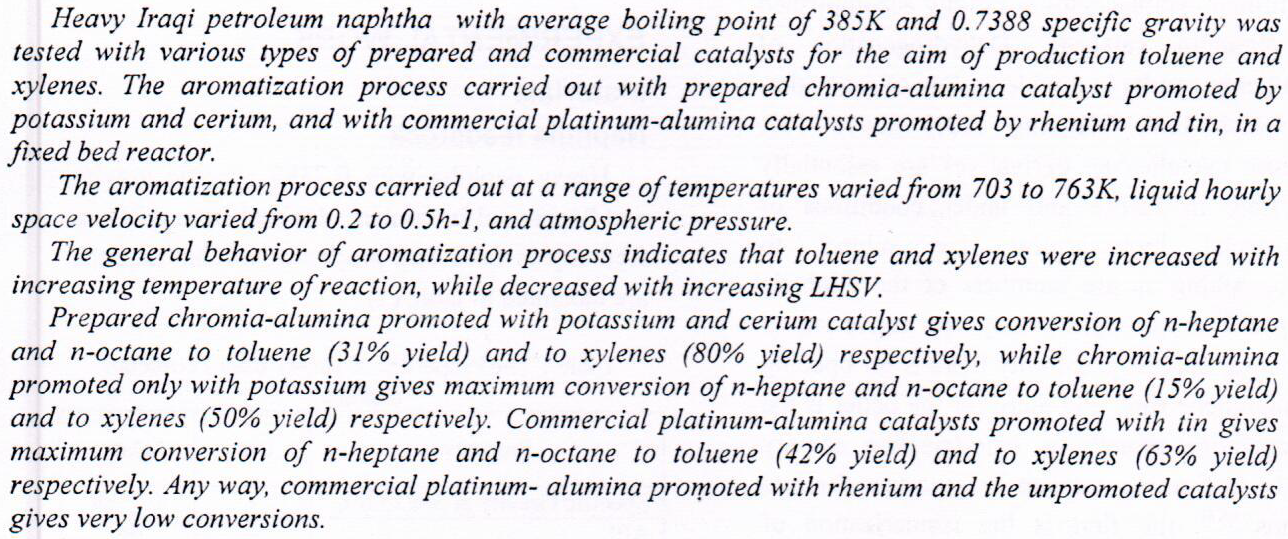
Praise be to God, who started his book with the praise of himself and prayers and peace be upon those who have no prophet after him and his family and companions and those who followed them with charity until the Day of Judgment.
For it is known to every researcher in jurisprudence and its origins that the semantics in terms of formulas for assignment are divided into an order and a prohibition, and I have seen it necessary to write a small research on the prohibition, and since this topic is complex, and has a great impact on the difference of scholars, I decided to write on one issue of it And it is the absolute prohibition and its effect on the difference of jurists, and what is meant by the absolute p
Caffeine (1,3,7-trimethylxanthine), which is the most widely consumed stimulant in the world, had been isolated and estimated gravimetrically in fifteen different commercial kinds of tea found in the Iraqi market.The kinds of tea were chosen according to their differences in the degree of fermentation and the method of processing i.e. black , gray and green . The isolated caffeine was identified by melting point, sublimation, TLC, chemical tests, UV , IR , HPLC and CHNO analysis. &nb
... Show More (1)
(1)
In this research, damping properties for composite materials were evaluated using logarithmic decrement method to study the effect of reinforcements on the damping ratio of the epoxy matrix. Three stages of composites were prepared in this research. The first stage included preparing binary blends of epoxy (EP) and different weight percentages of polysulfide rubber (PSR) (0%, 2.5%, 5%, 7.5% and 10%). It was found that the weight percentage 5% of polysulfide was the best percentage, which gives the best mechanical properties for the blend matrix. The advantage of this blend matrix is that; it mediates between the brittle properties of epoxy and the flexible properties of a blend matrix with the highest percentage of PSR. The second stage
... Show MoreBackground: The microhardness of a composite resin is a vital parameter that is used to determine its clinical behavior. Measuring the microhardness of a composite resin has been used as an indirect method to assess its degree of conversion and extent of polymerization. The purpose of this in vitro study was to evaluate the effect of three curing distances (0, 2, and 4 mm) on the microhardness of the top and bottom surfaces of three types of flowable bulk-fill composite resins (smart dentin replacement, Opus bulk fill flow, and Tetric N). Material and method: Sixty-three specimens from the three types of composite resins (n=21) were fabricated using Teflon mold with a 4mm depth and a 5 mm internal diameter and cured for 20 seconds. For e
... Show More (2)
(2)
 (1)
(1)
 (4)
(4)
 (4)
(4)
 (24)
(24)
 (23)
(23)
 (7)
(7)
 (5)
(5)
This research studies the development and synthesis of blended nanocomposites filled with Titanium dioxide (TiO2). Blended nanocomposites based on unsaturated polyester resin (UPR) and epoxy resins were synthesized by reactive blending. The optimum quantity from nano partical of titanium dioxide was selected and different weight proportions 1%, 3%, 5%, and 7% ratios of new epoxy are blended with UPR resin. The dielectric breakdown strength and thermal conductivity properties of the blended nanocomposites were compared with those of the basis material (UPR and 3% TiO2).The results show good compatibility epoxy resins with the UPR resin on blending, dielectric breakdown strength values are higher while thermal conductivity values of
... Show MoreAn experimental study was conducted on pressure drop of water flow through vertical cylindrical packed beds in turbulent region and the influence of the operating parameters on its behavior. The bed packing was made of spherical and non-spherical particles (spheres, Rasching rings and intalox saddle) with aspect ratio range 3.46 D/dp 8.486 obtaining bed porosities 0.396 0.84 and Reynolds number 1217 21758. The system is consisted of 5 cm inside diameter Perspex column, 50 cm long; distilled water was pumped through the bed with flow rate 875, 1000, 1125, 1250,1375 and 1500 l/h and inlet water temperature 20, 30, 40 and 50 ˚C. The packed bed system was monitored by using LabVIEW program, were the result
... Show More (23)
(23)
 (17)
(17)
